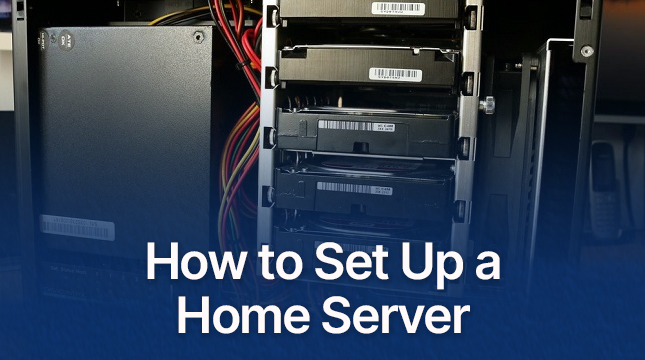This website uses cookies so that we can provide you with the best user experience possible. Cookie information is stored in your browser and performs functions such as recognising you when you return to our website and helping our team to understand which sections of the website you find most interesting and useful.
How to Set Up a Home Server: A Beginner’s Guide

Introduction
A home server can be a valuable tool, whether you’re using it for personal projects or work. It allows you to store files, share data, stream media, host websites, and more. This guide will break down the basics of setting up your home server in a way that’s easy to understand.
Step 1: Choose Your Hardware
First, you’ll need to pick the hardware that will power your home server. Here’s what to look for:
- CPU: A multi-core processor with a good speed will help your server run multiple tasks at once.
- RAM: For most tasks, 8GB of RAM is a good starting point.
- Storage: You can choose either a traditional hard drive or a faster SSD, though SSDs tend to cost more.
- Operating System: Many people use Linux-based systems like Ubuntu Server, Debian, or CentOS.
- Case: Select a case that will protect your hardware and allow for proper airflow to keep things cool.
Step 2: Install the Operating System
Once you’ve set up your hardware, create a bootable USB drive with the operating system you chose. Insert the USB drive, start up the server, and follow the on-screen instructions to install the OS.
Step 3: Configure Basic Settings
After installation, you’ll need to adjust some initial settings. Set up network connections, create user accounts, and ensure basic security configurations.
Step 4: Install the Necessary Software
Depending on what you’ll use the server for, you might need specific applications. Here are some common ones:
- File Sharing: Programs like Samba or FTP servers are great for sharing files.
- Media Streaming: For streaming, consider software like Plex or Kodi.
- Web Hosting: Tools like Apache or Nginx can help if you’re hosting a website.
- Remote Access: Apps like TeamViewer or AnyDesk allow you to access your server from a distance.
Step 5: Secure Your Server
Keeping your server safe from unauthorized access is essential. Here are a few easy steps:
- Strong Passwords: Use unique, strong passwords for each account.
- Firewall: Activate the built-in firewall and set it up to block unwanted traffic.
- Regular Updates: Make sure your operating system and applications stay updated with the latest security patches.
Conclusion
Setting up a home server gives you more control over your data and online activities. By following these steps and maintaining good security practices, you’ll have a reliable and efficient server right at home.

Let's Start Your Project
Get free consultation for your digital product idea to turn it into reality!
Get Started





